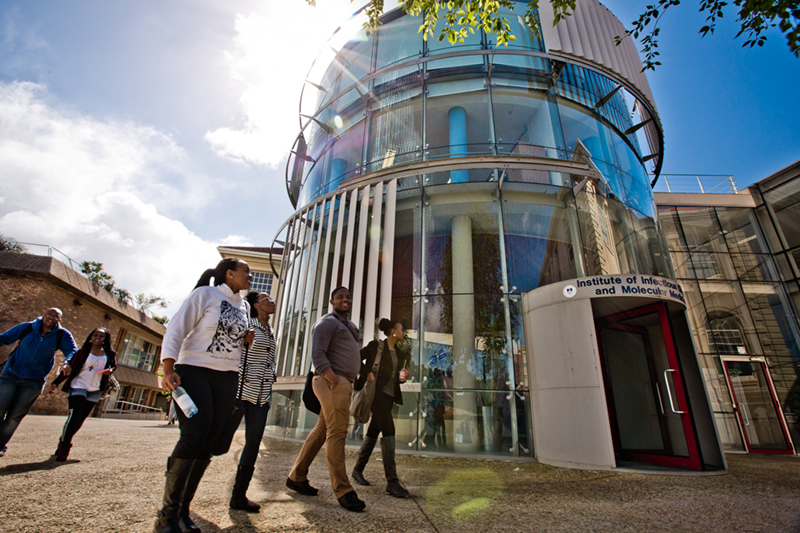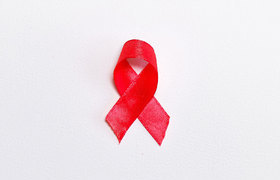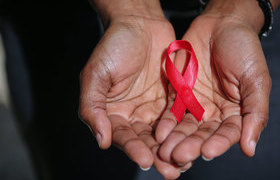HIV cure: a global science conversation
18 August 2021 | Story Nobhongo Gxolo. Photo Supplied. Read time 6 min.
While many resources have been rallied in response to COVID‑19, it is essential to not neglect other pandemics that continue to have a deep and lasting effect, and on which equally important and life‑saving work is focused. World‑renowned researchers working on HIV recently participated in the Life Sciences Across the Globe seminar series, which brings together global experts to discuss life sciences topics of global interest.
On 4 August, the University of Cape Town’s (UCT) Institute of Infectious Disease and Molecular Medicine (IDM) hosted the monthly seminar. The series is in partnership with the Janelia Research Campus of the Howard Hughes Medical Institute, and leading research institutes from around the world.
Opening the seminar, Associate Professor Jo‑Ann Passmore, who chairs the Education Committee of the IDM, highlighted the institute’s focus on research on diseases of importance in Africa, and its commitment to training the next generation of African scientists.
“This seminar is a global story of health and hope – a search for an HIV cure.”
“There are currently more than 40 million [people] globally living with HIV, many of whom are living in sub‑Saharan Africa. Since 2009, HIV researchers like the pioneers presenting in this ‘Cure’ session today have been focusing on the end‑game: a cure for HIV. This seminar is a global story of health and hope – a search for an HIV cure,” said Associate Professor Passmore.
She handed over to the moderator, Professor Robert Siliciano, a pioneer in HIV research from Johns Hopkins University and investigator with the Howard Hughes Medical Institute.
Professor Siciliano reiterated Passmore’s point that with so many people living with HIV, it is important to not let the COVID‑19 pandemic distract from the important work being done in the HIV space, adding that: “Almost all of them [people living with HIV] would die from AIDS without lifelong anti‑retroviral therapy. We’re here to talk about why that is and what we can do about it – essentially the search for a cure.”
Strategies towards a cure
Professor Sharon Lewin, one of the panellists, is an infectious diseases physician and basic scientist. Lewin is the inaugural director of The Peter Doherty Institute for Infection and Immunity, a joint venture between the University of Melbourne and Royal Melbourne Hospital in Australia. Her research focuses on understanding why HIV persists despite treatment; she also develops clinical trials aimed at ultimately finding a cure for HIV.
Lewin noted that to achieve treatment uptake by 95% of people living with HIV by 2025 is a challenging goal, considering the 1.8 million new global infections per year.
“There are exciting advances of anti‑retroviral therapy coming down the track like intra‑muscular forms.”
Tracing the history of the virus, she mentioned how the face of HIV has changed dramatically through anti‑retroviral therapy, which has become simpler with the fixed daily dosage of one tablet per day. Treatment is also relatively cheap, mostly accessible, non‑toxic, and available to at least 70% of people around the world.
“There are exciting advances of anti‑retroviral therapy coming down the track like intra‑muscular forms, so people just need to have an injection once every two months to keep their virus under control. But anti‑retroviral therapy is not perfect, which is why we need a cure,” she said.
For Lewin, testing is an important core strategy when talking about the prevention of HIV. This is because once someone tests positive and starts to take treatment, their health improves, and they eventually become less infectious.
She referred to this as “treatment as prevention”.
“There’s a huge effort, particularly in countries like South Africa, to destigmatise testing – it’s very different getting tested for HIV and getting tested for COVID‑19. There’s a reluctance to get tested for a whole range of reasons, so we have to normalise testing. To test people frequently, at their consent and starting treatment [early] is very effective. All of those things have led to a reduction in HIV over time.”
Bringing it home
Panellist Professor Thumbi Ndung’u is an infectious diseases researcher and deputy director and Max Planck research group leader at the Africa Health Research Institute. Based in Durban, he works with the Females Rising through Education, Support and Health (FRESH) cohort. FRESH ensures that young women are empowered through the programme and that it works in a bi‑directional way, encouraging participation and feedback.
According to Professor Linda-Gail Bekker, co‑panellist and the director of the Desmond Tutu HIV Centre at the IDM, FRESH “allows participants to inform the design and the implementation of future HIV cure research … making sure the participants become self‑supporting [through] basic science and social good, empowerment, life skills, career exploration, job readiness, [and] poverty alleviation.”
“KwaZulu‑Natal has the highest prevalence of HIV in the world.”
FRESH also provides pre‑exposure prophylaxis (PREP) to each participant to prevent HIV infection.
Professor Ndung’u noted that KwaZulu‑Natal has the highest prevalence of HIV in the world. According to his presentation, research lead by his colleague Dr Emily Wong and published in Lancet Global Health this year, showed that for people between the ages of 25 and 44, the prevalence of HIV reaches about 36% in males and almost 60% in females.
“For me, [as] somebody living in a resource‑limited setting, the most exciting approaches are the ones of early treatment combined with immune therapies because these strategies are more likely to be applied in [these] settings,” said Ndung’u. “There’s also evidence that this is achievable. Combination approaches will likely form the first line of HIV cure strategies.
“We have a history where we have seen that developing interventions by themselves is not enough. We need to make sure that interventions are tailored to the communities that will benefit from them.”
Hope and healing
Opening her presentation with some sobering statistics, Professor Bekker reminded the audience of the 78 million people who’ve been infected, and the 39 million who’ve succumbed to HIV over the past 30 years.
She recounted the evolution of the virus and the eras which it has traversed: one of despair, another of hope, and most recently, the idea that a cure may be in sight.
“You are more likely to die with your HIV than of your age‑related illness in this modern era,” she said.
“The cure for HIV will come. We’ve got to be optimistic … We’ve got to believe.”
Still, she highlighted the various barriers that can make it “difficult to ensure that we can continue treatment, continue at scale, and continue it well”. These barriers include politics, discrimination and stigma, accessibility, and certain regulations. For Bekker, this epidemic is far from over.
In her presentation, Bekker included a video snippet of Global Cure Ambassador Moses Supercharger from Uganda who has been living with HIV since 1994. When he came out about his status in an attempt to combat stigma, he ended up losing his job as a radio host.
His appeal to others living with HIV was: “Don’t lose hope. Researchers are spending sleepless nights working hard to make sure we get an HIV cure. In fact, that researchers [care] about my life keeps me going … The cure for HIV will come. We’ve got to be optimistic … We’ve got to believe.”
Being inclusive of those being served, in terms of education and working with community advisory boards to make sure that the community has a voice, is crucial for Bekker.
“In my opinion the best science is relevant science. Relevance asks, ‘What is the priority?’ Science then asks the right question. If asked and listened to, community frames the context. And together community and science can find the right answer.”
 This work is licensed under a Creative Commons Attribution-NoDerivatives 4.0 International License.
This work is licensed under a Creative Commons Attribution-NoDerivatives 4.0 International License.
Please view the republishing articles page for more information.










